SYSTEM OVERVIEW - EXISTING CONDITIONS
Categories and Sub-Categories
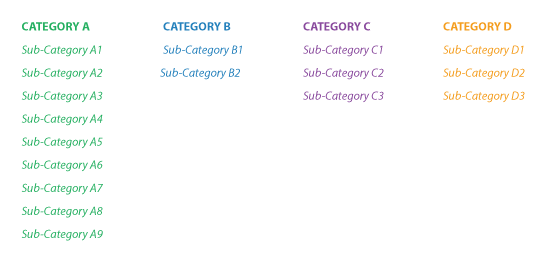
There are 4 main categories in the system that are foundational blocks of the training. Category A has 9 sub-categories. Category B has 2 sub-categories. Category C has 3 sub-categories and category D has 3 sub-categories.
Training Exercises Matrix
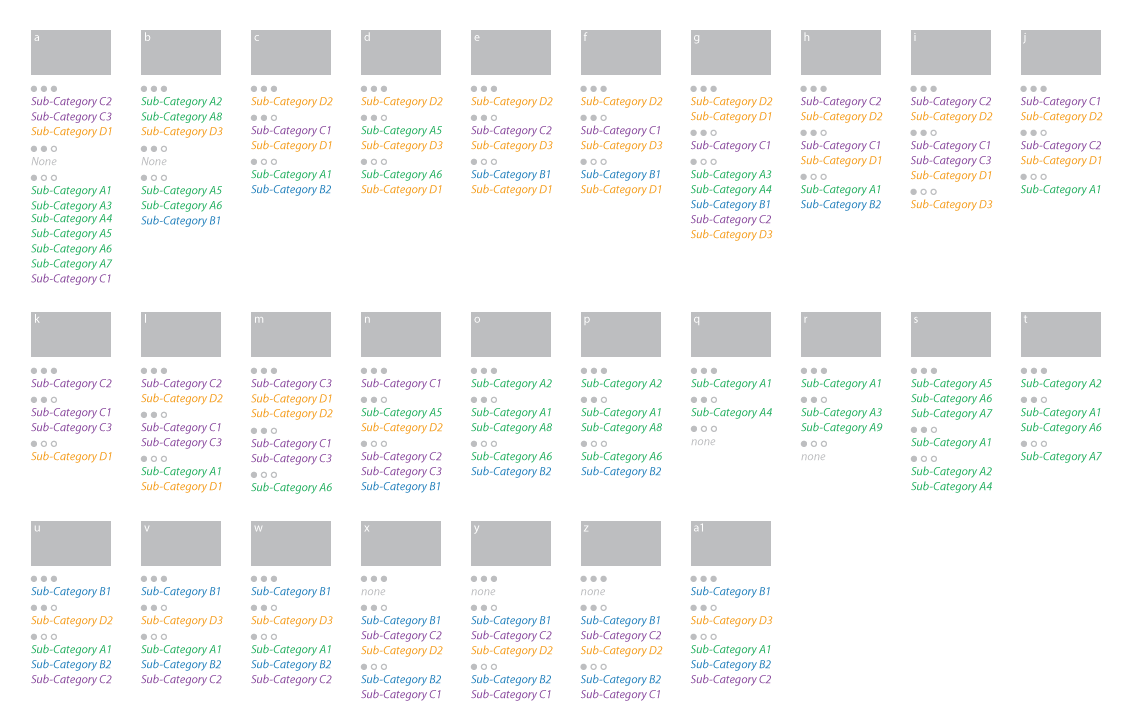
There are 27 training exercises that are powered by one or more sub-categories within one or multiple main categories. Each training exercise is rated on a scale of 0 to 3 on the effectiveness of the sub-category (or multiple sub-categories) training.
TRAINING SESSIONS - SETTING UP
Exercise Selection Factors Lineup
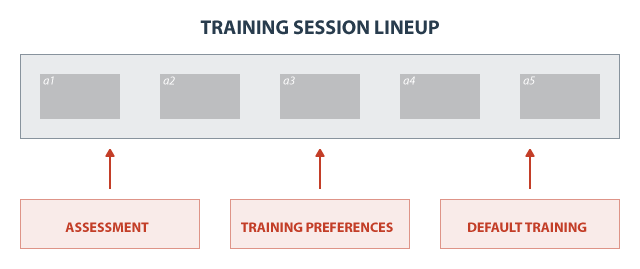
The three factors that affect the daily training session lineup are assessment, the user's personal preferences and the default training lineup (curated by the system administrators).
ASSESSMENT:
The system provides an assessment test that rates the user’s aptitude across all 17 sub-categories within 4 main categories. Based on the assessment results, the 4 sub-categories with the lowest scores within each main category and the one sub-category with the highest score (any of the 4 main categories) are flagged. 5 flagged sub-categories are auto-selected in training preferences, and exercises associated with selected sub-categories will appear in the daily session training queue. The users can override assessment sub-categories by opening personal preferences and deselecting undesired sub-categories.
PERSONAL PREFERENCES:
The system provides a flexible customization tool to select sub-categories to train during daily training sessions, based on personal preferences. The user may decide to select one or more sub-categories in the training setup tool in order to customize the daily training session. The user may decide to select sub-categories in addition to assessment sub-categories.
DEFAULT TRAINING:
The user may choose to bypass taking the assessment OR setting personal training preferences. In this case the daily training queue will be populated by the default training exercises lineup curated by the service provider. In the case that the user selects all 17 sub-categories in the training preferences, the daily training session queue will be populated by the default training exercises lineup.
Sub-Categories Exercise Queues
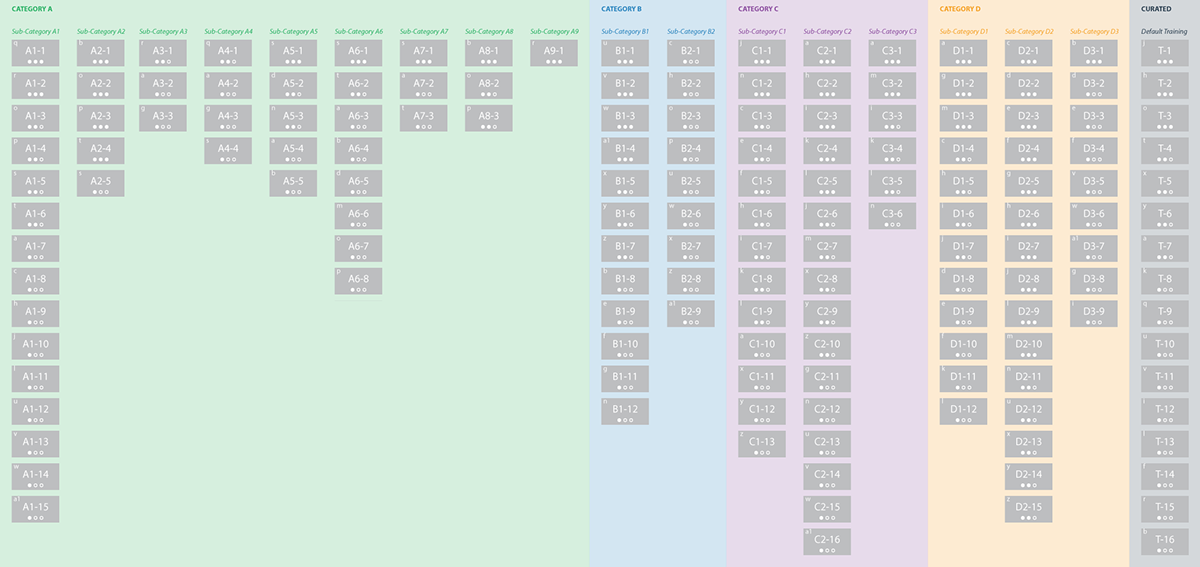
In order to start building the training session lineup, exercises needed to be reorganized into sub-category queues. Each sub-category queue is arranged in the following way: exercises with the highest rank appear at the top of the queue, followed by lower rank exercises, finished with the lowest rank exercises at the bottom of the queue.
TRAINING SESSIONS - LINEUP ANATOMY
Assessment
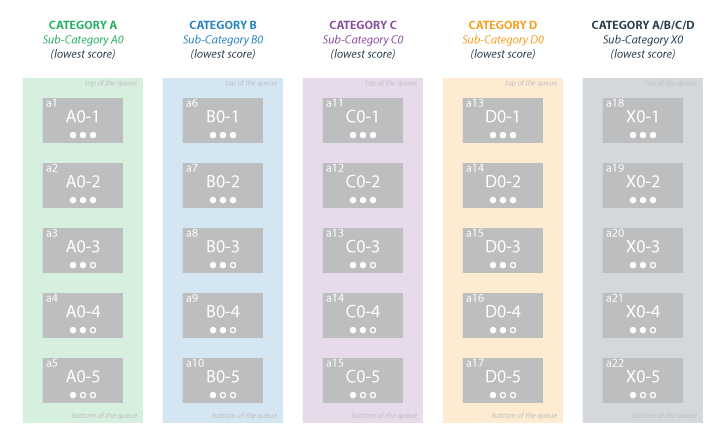
If the user takes the assessment, 5 sub-categories (the 4 lowest scores within each main category and one highest score across all for main categories) are automatically flagged and selected for the lineup in the daily training session.
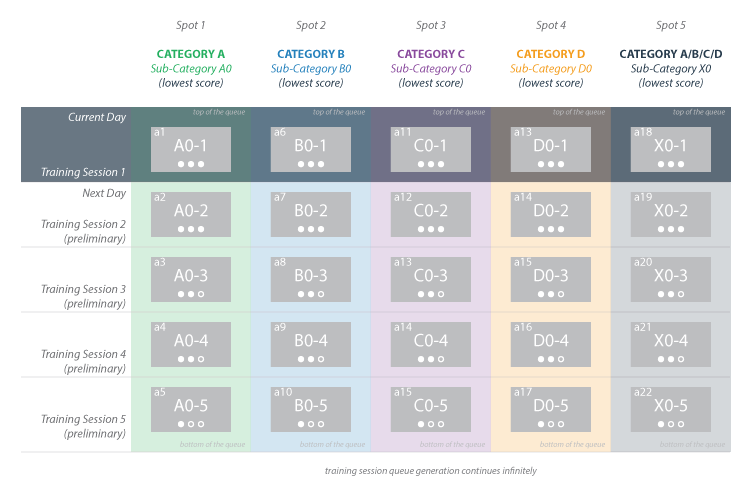
The assessment based daily training session queue is organized the following way: Spot 1 of 5 is occupied by one of the exercises from the lowest sub-category exercises queue of main Category A, Spot 2 - Category B, Spot 3 - Category C, Spot 3 - Category D, Spot 5 - by one of the exercises of the highest score sub-category of any 4 main categories. Each day the user plays at least one exercise from each flagged sub-category. The sub-category queue is arranged in the following way: exercises with the highest rank appear at the top of the queue, followed by lower rank exercises, finished with the lowest rank exercises at the bottom of the queue. The first daily training sessions display the highest ranking exercises and progress towards lower ranking exercises over time.
Personal Preferences
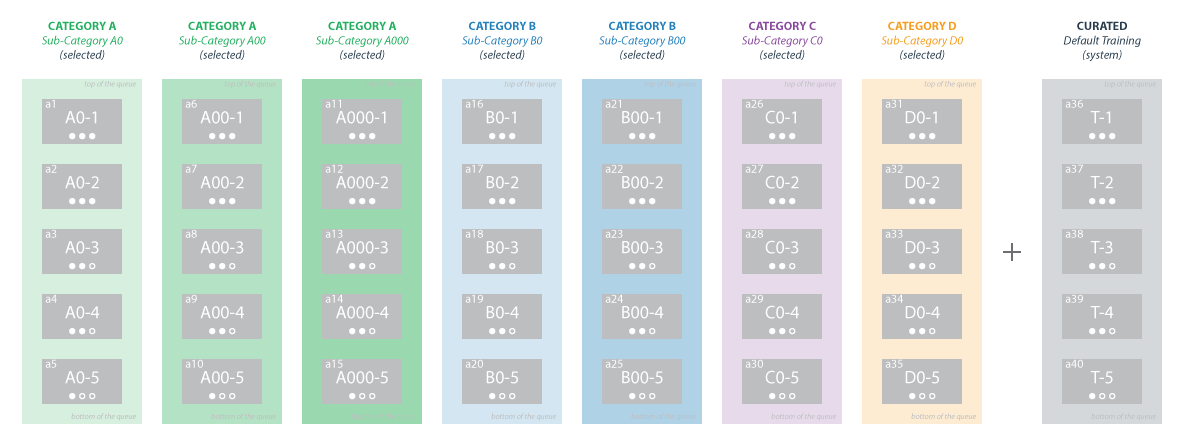
The user selects categories to train via personal preferences. In addition to user preferences, the default training queue is introduced in the pool of training exercises to provide curated training as a supplement and enhancement to customized training.
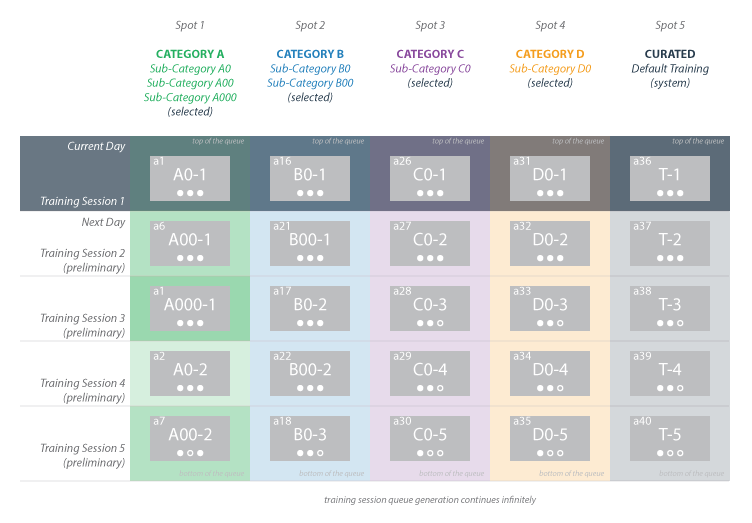
In order to fit the all categories queue in the 5 spot training exercises lineup, category queues are grouped and appear in their designated main category location. To ensure that all selected sub-categories are equally trained, the exercises alternate based on the designated linear order The top exercise from sub-category A0 appears in the main category spot on the first day, the top exercise from sub-category A00 appears on the second day, and the top exercise from sub-category A00 appears in the main category spot on the first day. After that, the order switches back to the second exercise from the queue A0, etc). In addition to user preferences that occupy the first 4 spots of the training session queue, the fifth spot is populated by the default training, a curated list of exercises that provides optimal training supplement, regardless of the user's preferences.
Default Training
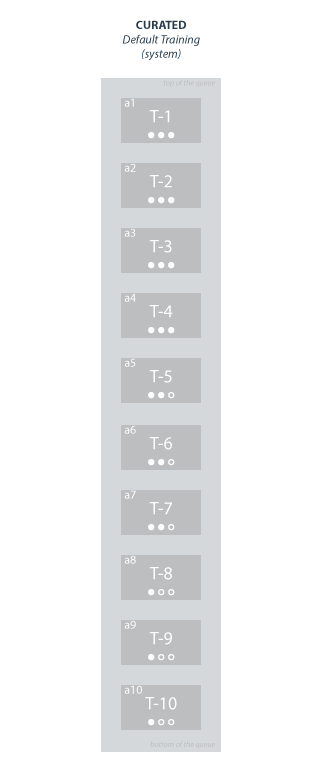
When the user bypasses setting up preferences or taking the assessment, the training session is populated by the curated training session queue. Also, when the user selects all 17 sub-categories, the training session lineup defaults to the curated exercises queue as well.
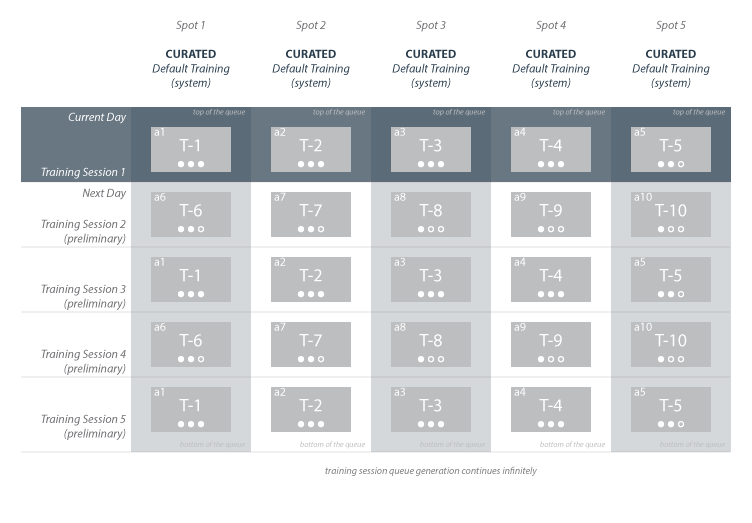
In the case when the training session is populated by the curated queue, the 5 spots in the daily training session lineup are also populated with exercises from the curated queue.
Personal Preferences - Partial Settings
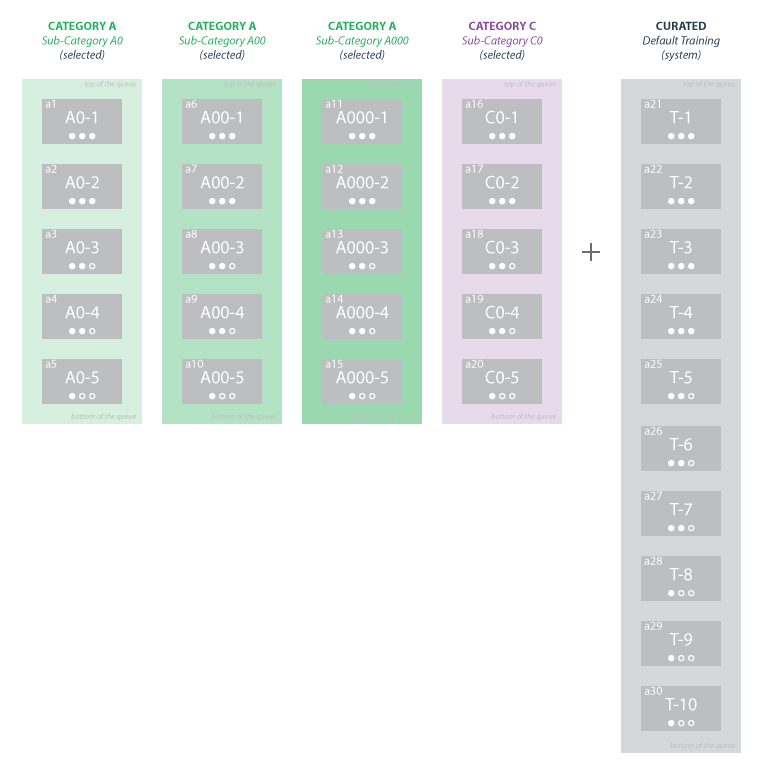
In the case when the user does not select sub-categories in all 4 main categories, the curated training queue is introduced to supplement daily training.

When the user selects sub-categories in only a few main categories, the spots with missing categories are filled with the curated queue exercises.
Assessment and Personal Preferences

In addition to taking the assessment, the user can also make additional selections via the personal training settings and remove assessment flagged sub-categories from the training session settings. Whenever the user selects, or deselects sub-categories in addition to assessment recommendations the curated training queue is introduced into the daily training session exercises queue to supplement and balance training sessions.

Both flagged and selected sub-categories appear in their designated category spots and alternate between sub-categories to ensure that all sub-categories are trained equally. The fifth spot that is typically occupied by the highest scored sub-category shares the lineup with the curated training queue, and alternates between the two.
TRAINING SESSIONS - RULES
Sub-Category Queues Progression
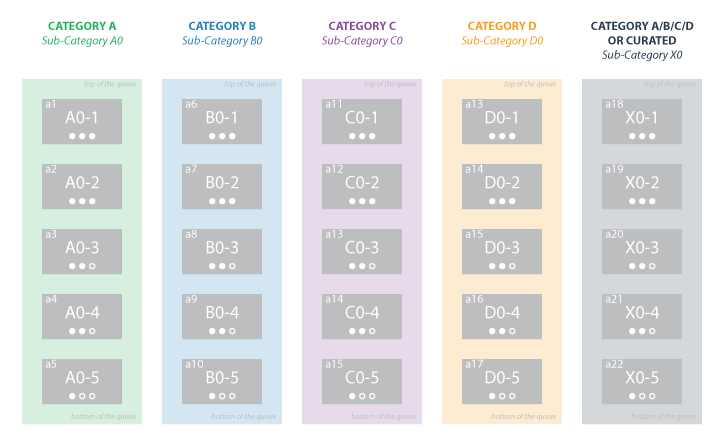
Progression rules apply only to training sessions that have been defined by the assessment and the user’s personal preferences.
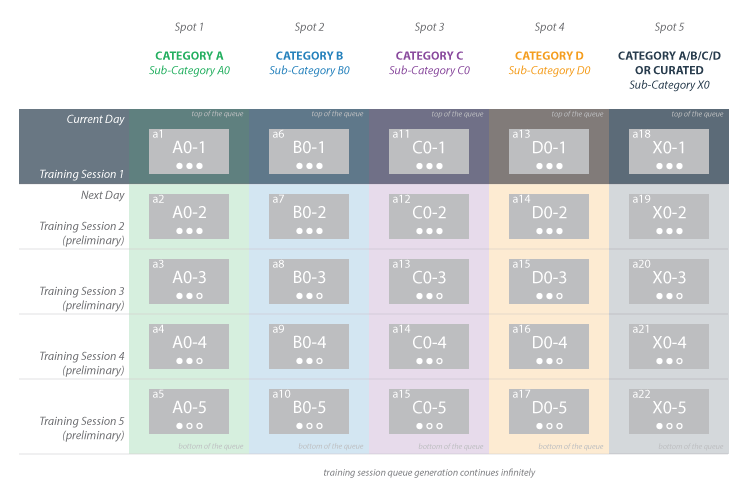
The very first training session lineup spots are populated by the top rated exercises within each sub-category queue.
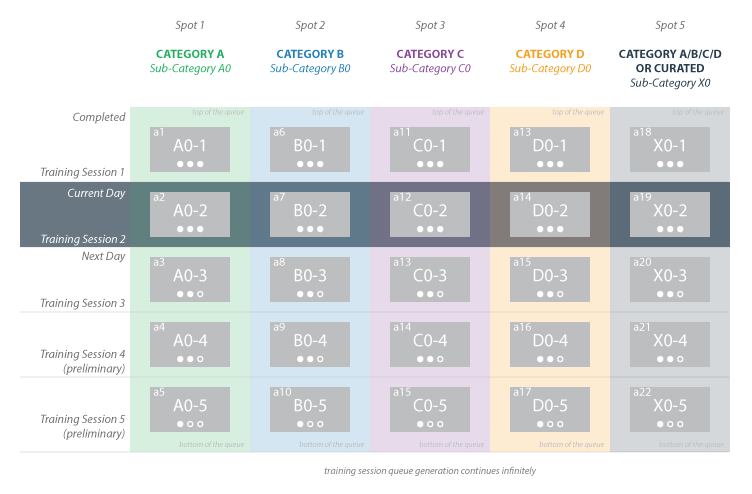
The following day, training session lineup spots are occupied by the next exercise within their corresponding sub-category queues.
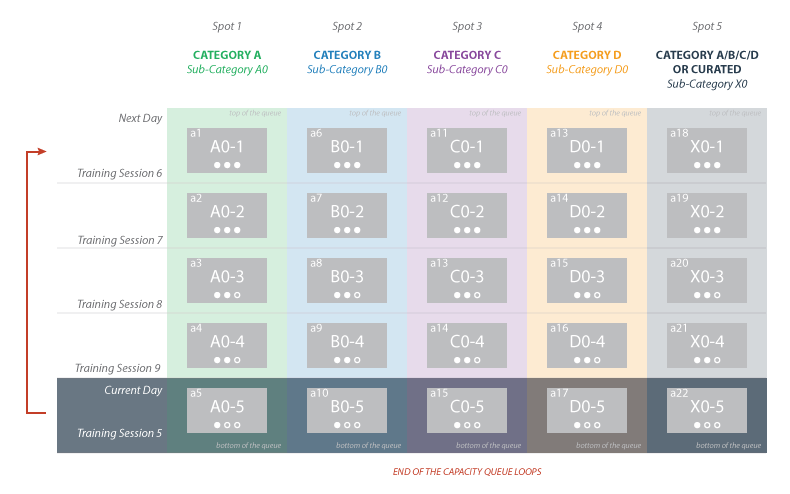
The progression of the exercises continues each day, until the training session spot is occupied by the last exercise in the sub-category queue. The next day, the queue order loops back to the very first exercise in the sub-category queue and the progression starts over again.
Same Exercise in Different Sub-Categories on Two Consecutive Days

Two sub-categories have the same exercise in the lineup.
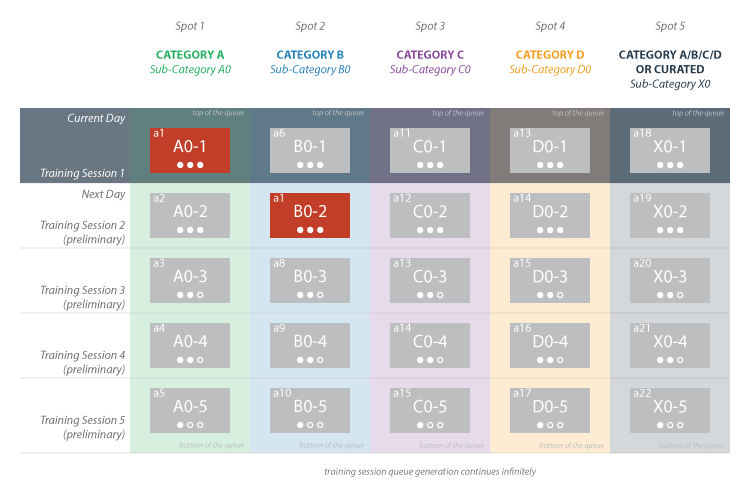
The same exercise appears in two training session lineups twice over the span of two days.
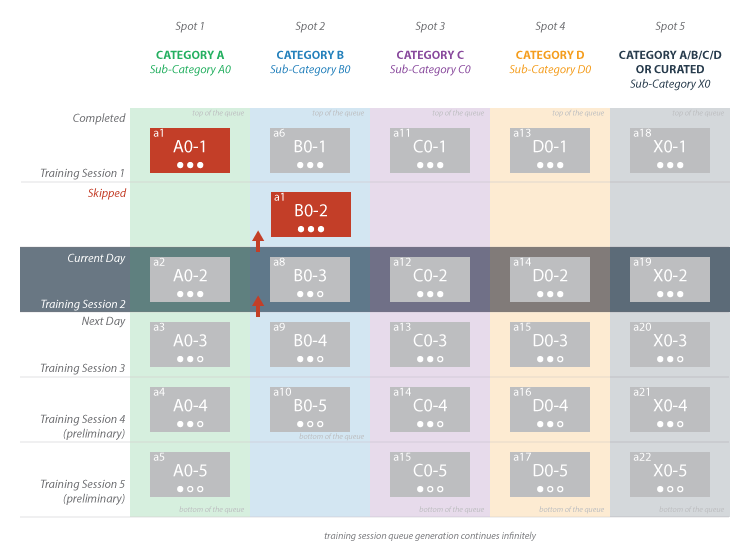
In order to avoid repetition and keep training session lineups interesting for the user, the exercise that has been completed on the previous day skips to the next exercise in the sub-category queue.
Same Exercise in Different Sub-Categories on the Same Day
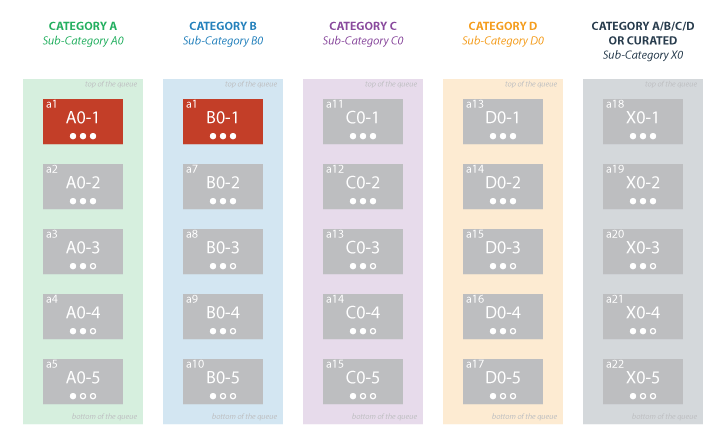
Two sub-categories have the same exercise in the lineup.

The same exercise appears in two training session lineups twice in a single training session. In order to avoid repetition and keep training session lineups interesting for the user, the exercise that has been completed on the previous day skips to the next exercise in the sub-category queue.
Training Session and Independent Training

The user has completed the training session and has completed independent training which includes the exercise that appears in one of the sub-category queues on the following day.
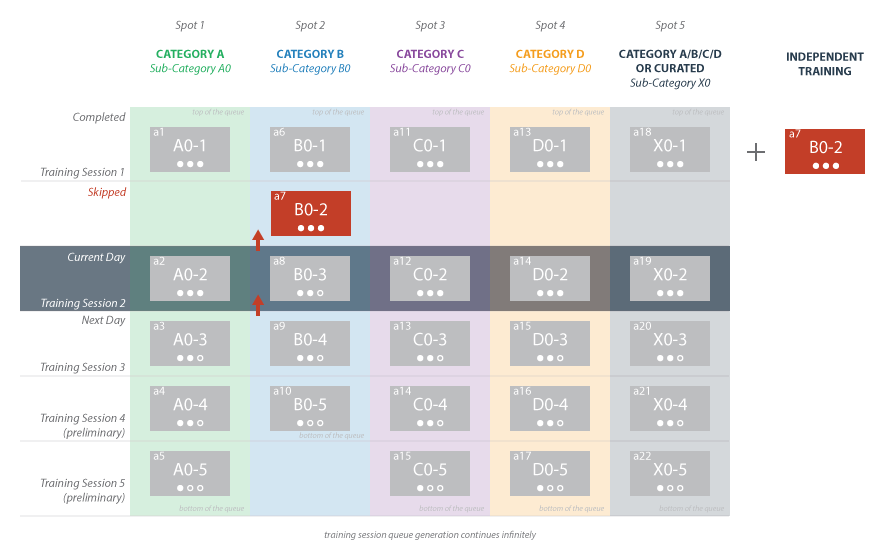
In order to avoid repetition and keep training session lineups interesting for the user, the exercise that has been completed on the previous day skips to the next exercise in the sub-category queue.




